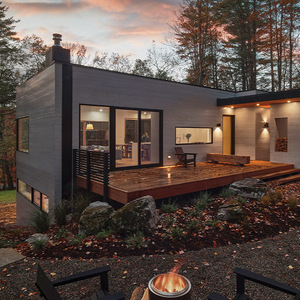Help 4 Trim On Problem Doors & Windows
I’m very soon going to begin trimming windows and doors in my new house. We’re using stain grade knotty alder.
Going through the house I’m finding many exterior windows and interior doors where the jambs are either proud of the drywall or short of the drywall – in some cases by 3/16″ (in a few cases more). My casings are 3-1/4″ wide.
On the jambs that are “proud” of the drywall I’m unsure whether to handplane down the proud jambs or shim the back of the casings – I’ve thought about a separate piece of “back-banding” on the casings but it’s not an option for various reasons.
On the jambs that fall short of the drywall (not flush) I’m not sure whether to sand the drywall down to a taper to be flush with the jambs or tack on additional material to the jamb edge to bring them flush —
I’m guessing there are a combination of solutions but would like some tips, hints, etc. from some pro’s — I’m a very experienced DIY’er but by no means a pro finish carpenter.
Thanks.



















Replies
In both cases, my solution is to remove material from the center of the trim. When the frame is proud of the drywall, I use a block plane to taper the edge of the trim that will rest on the frame. If you remove material from the portion of the trim that's closer to the center, that changes the angle of the lip that rests on the frame. In extreme cases, I'll remove a little material from a strip down the center of the moulding, using a dado cutter in my table saw.
When the drywall is proud, I plane the angle of that edge of the moulding. This situation is more likely to require the dado than the other.
This works well when the difference is no more than 1/16". It gets a little difficult when it's more than that, and I would pursue the use of shim material if the difference is 1/8" or more.
George Patterson, Patterson Handyman Service
Put screws into the framing through the sheet rock leaving the heads out at least a 1/4". Locate the screws where the casing will cover the holes.
Take a flat bar, put a shim between the bar and the jamb extension and push the window jamb out. While you have it pushed out pump a few 15 gauge nails into the jamb extension.
Start with the corners, if that isn't enough repeat as needed.
Sometimes if the drywall is proud I simply beat down the wall board with my hammer being careful to stay within the boundaries of the trim you are using, in your case 3- 1/4 inches. If the jamb is proud you can easily and very quickly shave it down with a block plane or an electric plane.
First a question, on the door frames that are not "right", if one side is "proud" of the drywall, is the other side "below"the d/w?, in other words you might be better off re-hanging the doors in the R.O.'s if that's the case.....If not...then for the jambs that are proud I would plane them down w/ either a block plane or power planer, in either case you want to bevel the jamb toward the wall,this gives you a little wiggle room so you don't have to plane the jamb "dead flush" with the d/w...in other words you can leave the jamb slightly proud and still have the trim sit flat on the jamb and the wall.....remember to put a slight back bevel on your miters at the corners(to compensate for the slight angle the trim will sit at)......
for the recessed jamb that's off by 1/16" or less you can get away with crushing the drywall back to about 2" if needed.....for anything over 1/8" I would use extension jambs....you can rip these w/a bevel on them so you only need to rip one size....the bevel will allow you to use the one size on all the jambs that are recessed.....once again the bevel faces toward the wall.....If the largest "recess" is say, 1/4" then rip your extensions to 5/16" with a 3 degree bevel....then you can use these on all the jambs needing extensions...one size fits all.
These methods both allow the trim to be applied without any alterations to their profile, so everything looks the consistent, no thin edges....
Hope this all makes sense to you,
Geoff
P.S. depending on your jamb stock thickness you can set the extensions with or w/out a reveal, if your jamb stock is on the thin side (typical) then set the extensions flush with the jambs inside edge.